MARKET OVERVIEW
The Global Autolyzed Yeast Extract market finds application in different industries-the food and beverage, pharmaceuticals, and animal feed. As consumers' interests shift towards natural clean-label ingredients, the market seems to be growing and offering a good alternative for synthetic additives. Widely acknowledged as a flavor enhancer, nutritional profiles improvement, and good functionality in different applications, this product is in demand within the food sector and also goes beyond the conventional lines and into diverse industries looking for solutions.
However, the Global Autolyzed Yeast Extract market is generally associated with food flavoring and nutritional enhancement. It can also be used in more unusual applications such as the cosmetics industry having started to look at the bioactive properties of autolyzed yeast extracts for skincare formulations. Full of peptides and amino acids, the autolyzed yeast extract can also be quite good for hydration and skin barrier protection, which provides an opportunity for incorporation in serums and creams. Research is still being conducted in the pharmaceutical field, and the promising results of further studies indicate that the components from autolyzed yeast might benefit gut health and immune functions, paving the way for their nutraceutical applications in general wellness. Thus, the field of research and application dealing with autolyzed yeast extract is not restricted to the conventional aspects of its use, but it will be extended to health-oriented innovations.
Sustainability is now a much-debated topic in ingredient sourcing, and yeast-derived products fall in line with sustainable manufacturing practices. Yeast extracts from fermentation do not require the stressed resources of animal-based proteins; there will be a minimum of waste and optimum nutrient utilization. Hence autolyzed yeast extract is a sustainable ingredient to promote a reduced dependency on synthetic enhancers and animal-derived products, and this could mean new avenues for industries wanting to convert to the circular economy, such as plant-based meat alternatives which attach great importance to natural umami flavor and nutritional benefits.
Besides human consumption, the Global Autolyzed Yeast Extract market goes a step further and even becomes relevant in agricultural contexts. So far, research on animal feed formulations shows that its efficacy improves gut health and enhances nutrient absorption in livestock and aquaculture. The same could be described as a natural growth promoter and a key to decreasing the use of antibiotics needed to combat increased resistance against antimicrobial actions. What feeds are going to advance in the future will integrate autolyzed yeast further into realistic formulations designed for specific nutritionally due requirements of different species with hope for healthier livestock production.
Global Autolyzed Yeast Extract market is estimated to reach $2,455.35 Million by 2032; growing at a CAGR of 5.8% from 2025 to 2032.
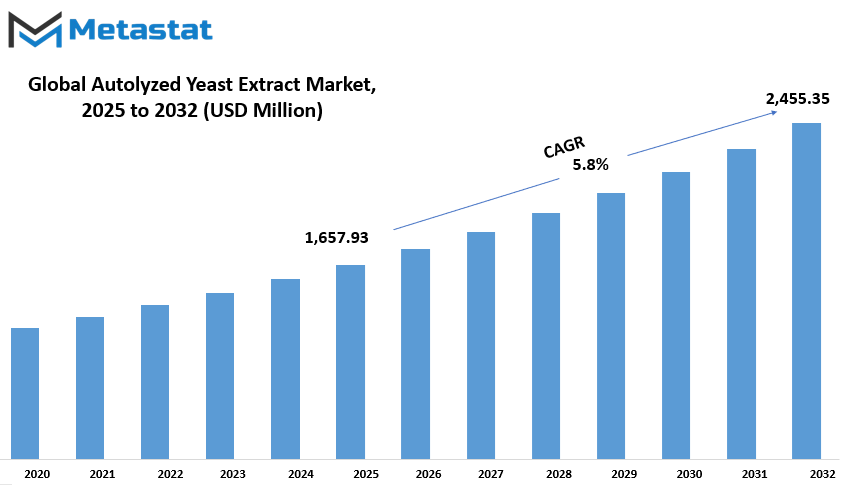
GROWTH FACTORS
The Global Autolyzed Yeast Extract market is expanding at a tremendous pace owing to the demand for clean-label & natural flavoring ingredients. In fact, consumers are now becoming aware of the quality ingredients and appreciation of being more clean in consumable food, which began the shift from artificial additives and preservatives in food products. Consequently, food manufacturers are heavily adopting autolyzed yeast extract as a natural means to replace synthetic flavor enhancers. The most noticeable trend is really seen in the processed food sector, where companies try to develop their tastes and qualities according to changing consumer expectations.
Another growth-failure of this market trend is the increased consumption of plant-based and processed foods. Because many people are turning into vegetarians and vegans, there has been a higher demand for ingredients that can give flavor enhancement without any derivatives from animal products. Autolyzed yeast extract can be used to add depth of flavor and umami tones, which heighten the sensory appeal of plant- based meals. Besides the food industry, autolyzed yeast extract is also found in the pharmaceutical and animal feed industries.
Although there are growth factors, certain restrictions appear to be in the way of the market. One major one is the way in which raw material prices fluctuate, thereby directly affecting production costs. As yeast extract is derived from natural fermentation processes, supply and cost variations of raw materials can directly impact overall profits in manufacturing. Moreover, regulatory restrictions in some regions could stand as a stumbling block to market growth. Certain countries have very stringent guidelines about yeast extract as food products, which restrict their wide application and hinder their trade through international markets.
However, the application of autolyzed yeast extract is a boon for these two approaches, which may create wonderful opportunities. With rising consumer interest in replacements to meat, however, manufacturers will also continue their efforts to better flavor their plant-based foods. The autolyzed yeast extract may serve as the ingredient of choice because it mimics the savory meat-like flavors, thereby qualifying as an essential ingredient for use in plant-based meats, soups, and sauces. Such a growing demand-afforded revenue opportunities for many players in the market could stimulate further innovativeness and investments in research and development.
Moving forward, with changing consumer preferences and evolving technologies in foods, this market is all raised under Global Autolyzed Yeast Extract. Challenges still face this market; however, the future of this industry seems bright in the forthcoming years, considering the scope of growing products in clean-label and plant-based segments.
MARKET SEGMENTATION
By Type
The global market for autolyzed yeast extract is flourishing, as industries are now appreciating the multifaceted purposes of these extracts in food and beverage applications, as well as pharmaceutical. This ingredient is derived from yeast via a natural self-digesting process and contributes flavor, nutritional value, and important portions within various formulations. Increased consumer demand for natural and clean label ingredients is the primary cause for steady growth of adoption in this market.
Consistency in processed foods, soups, sauces, and snacks is achieved with the help of autolyzed yeast extract flavor enhancers. The sweetish umami it provides reduces the requirement for artificial additives. Health-sustaining consumption has increased its inclusion in all plant-based and organic kinds of food. It is also an excellent source of proteins, vitamins, and amino acids; therefore, it has great importance regarding dietary supplements and functional foods. Last but not least, its worth in fermentation has made it valuable in brewing and baking industries.
The autolyzed yeast extract market can be segmented on the basis of its type, including Powder Autolyzed Yeast Extract, valued at $1,151.35 million, Paste and Liquid types. Different types come with different advantages in relation to application use. The powder form is used for dry mixes as it is compatible with very long shelf life and ease of use, while paste and liquid types are favored in applications that require a smooth texture and high solubility.
There has been increasing consumer preference for natural flavors and clean label products among others that crave high economic growth. The growing demand for foodstuffs without synthetic additives has made food manufacturers invest in yeast-derived products which have taste and nutritional values. Similarly, the processed food industry within developing economies is highly growing and contributing to factors increasing demand for yeast extracts. Fluctuations in raw material prices as well as the different regulations governing yeast-based ingredients are, however, constraints to market players.
However, continuous research and innovation in the market will go a long way to improve the potential functionalities of autolyzed yeast extract. Companies are shifting towards sustainable methods of production to target environmentally concerned customers. Advancements in extraction and processing will also improve the quality and consistency of the product, thus rendering the product far more attractive for different industries.
As the natural and functional trend increases with consumers, the market for Global Autolyzed Yeast Extract will also continue to grow. Business organizations will focus on new formulations in new developed markets. Diverse applications and growing consumer awareness provide a good future for autolyzed yeast extract in the emerging area of food, health, and industry applications.
By Application
The Global Autolyzed Yeast Extract Market seems to be gaining its focus as they realize the probability of this ingredient in improving the flavors, nutritional profiles, and production efficiencies in various industries. This ingredient finds its use widely within several industries, giving a natural remedy for taste, textural, and overall quality improvement in different products. Consumers prefer ingredients in their foods these days, whereas clean label products drive the market for ingredient applications further into autolyzed yeast extracts.
Food and beverage companies add autolyzed yeast extract in food products to increase flavor without artificial additives. It brings a deep umami note and finds its flavor palette in most processed foods, including ready-to-eat meals and savory snacks. Also, it can be used in the bakery and confectionery industry to enhance texture and maintain a well-rounded flavor profile of such products as bread, pastries, and sweets. Poultry and meat processors derive satisfaction from using this natural enhancer for meaty taste without the use of chemical enhancers but still with a full mouthfeel with enriched meaty flavor profiles. This ingredient is also used in soups, sauces, and seasonings, giving depth to the flavors to produce that perfect-rounded taste experience.
In the dairy industry, stabilization of flavors and consistency in products would also be achieved using this autolyzed yeast extract. It is relevant in nutraceuticals, which are functional foods and supplements. The animal-drinking-water sector uses it in livestock nutrition to improve digestibility and, ultimately, animal health. In addition to the key applications mentioned, other industries remain busy searching for new, more innovative applications of autolyzed yeast extract in terms of functionality and sensory benefits.
Given that they all seek greener alternatives and greater ingredient transparency, the trend will thus add impetus for the demand for autolyzed yeast extracts. Companies are working around the clock to fine-tune production techniques to influence product quality while ensuring that their products still fall within the preferred consumer-defined range of healthier and more natural foods. The trend will also continue to grow as research and development bring to light new forms of application for the continued strength of this ingredient in the global market.
By Distribution Channel
The Global Autolyzed Yeast Extract market is slowly getting attention from different industries because of its multipurpose nature and versatile applications. This deliciously flavored food becomes a flavoring and nutritional ingredient, made by the natural enzymatic degradation of yeast cell walls, which has become very widely applied in food manufacture and all kinds of products such as soups, sauces, seasonings, and instant food products. Providing an alternative to synthetic flavor enhancers, this ingredient has applications beyond food. Other applications include well-known applications in both pharmaceuticals and cosmetics due to healthy nutraceutical fermentation-derived qualities and ointments for the skin.
As the consumers get wise regarding clean labeling and natural ingredients, demand for autolyzed yeast extract keeps growing. Companies are improving their production methods to provide a consistent product that satisfies the highest industry standards and regulatory guidelines. The market is also expanding with the increasing availability of various distribution channels. Supermarkets and hypermarkets remain a key point of sale, allowing consumers access to several food products containing this ingredient. Specialty stores cater to those looking for specific health-conscious and gourmet selections. Online retailing has made purchases easier, providing a wider selection and reaching consumers across the globe.
Beyond acceptability, the industry faces several challenges like fluctuating raw material prices, consumer perception, and labeling issues. Some consumers may not have adequate knowledge about its benefits, which leads to misconceptions on its use in food formulations. Meanwhile, consumer education, awareness, and transparent labeling efforts to bridge this gap are in full swing. Companies are actively researching new applications and enhance production processes for the broad usage of this ingredient in various industries.
The Global Autolyzed Yeast Extract market will continue to showcase slow but steady growth due to never-ending commitment and innovation from the manufacturer side to meet evolving needs of the consumers. The continuous and increasing demand for plant-based and functional food items hence strengthens the market in favor of autolyzed yeast extract. Technological advances and increasing awareness of its benefits will likely keep the ingredient in use across multiple sectors, thereby aiding sustained market growth in the upcoming years.
|
Forecast Period |
2025-2032 |
|
Market Size in 2025 |
$1,657.93 million |
|
Market Size by 2032 |
$2,455.35 Million |
|
Growth Rate from 2025 to 2032 |
5.8% |
|
Base Year |
2024 |
|
Regions Covered |
North America, Europe, Asia-Pacific, South America, Middle East & Africa |
REGIONAL ANALYSIS
With its relevance in diverse food and beverage applications, pharmaceuticals, and animal feed industries, the global Autolyzed Yeast Extract market is experiencing steady growth across different regions. This market is segmented into regions such as North America, Europe, Asia-Pacific, South America, and the Middle East & Africa. Each one has contributed to the industry's overall growth.
The USA, Canada, and Mexico together significantly contribute to the market share of North America. A well-established food processing industry exists in the region; it has a rapidly increasing demand of consumers for natural flavour enhancers and increasing awareness of the nutritional advantages of yeast extract. In the U.S., autolyzed yeast extract is used in processed foods for the umami flavor enhancement, soups, sauces, and serve as a natural alternative to synthetic additives; this intention for increasing demand is now transferred to Canada and Mexico and their growing food manufacturing units and rising consumer preference for clean-label ingredients.
The UK, Germany, France, Italy, and the rest of Europe contribute to almost the same level to the market. The strong safety regulations in the food industry entice the manufacturers in the region to stray into the direction of natural ingredients, thus fuelling autolyzed yeast extract demand. Germany and France lead the way in usage as a result of the strong food processing sector: the UK and Italy follow suit and are also very beneficial with their growing vegan and plant-based food segments. The European markets trend of functional foods also affects yeast extract for its nutritional properties as well as natural flavor-enhancing capacities.
Along with India, China, Japan, South Korea, and the rest of Asia-Pacific create new demands by being among the fastest-growing markets. Although they still consume more of this product, both China and Japan use it both in conventional application and modern food processing. The changing eating habits and increase in disposable income over the years has brought up the food sector in India as still gradually progressing. South Korea further enhances the growth of yeast extract as a core ingredient for seasoning blends and processed food items because it is known for instant food and snack production.
South America such as Brazil, Argentina, and nearby countries gradually embraces autolyzed yeast extract alongside the expanding food processing sector. Brazil is the topmost market, largely driven by an increase in demand for savory snacks, sauces, and ready-to-eat meals. On the other hand, Argentina brings in more market growth through its increased focus on clean-label and natural food ingredients.
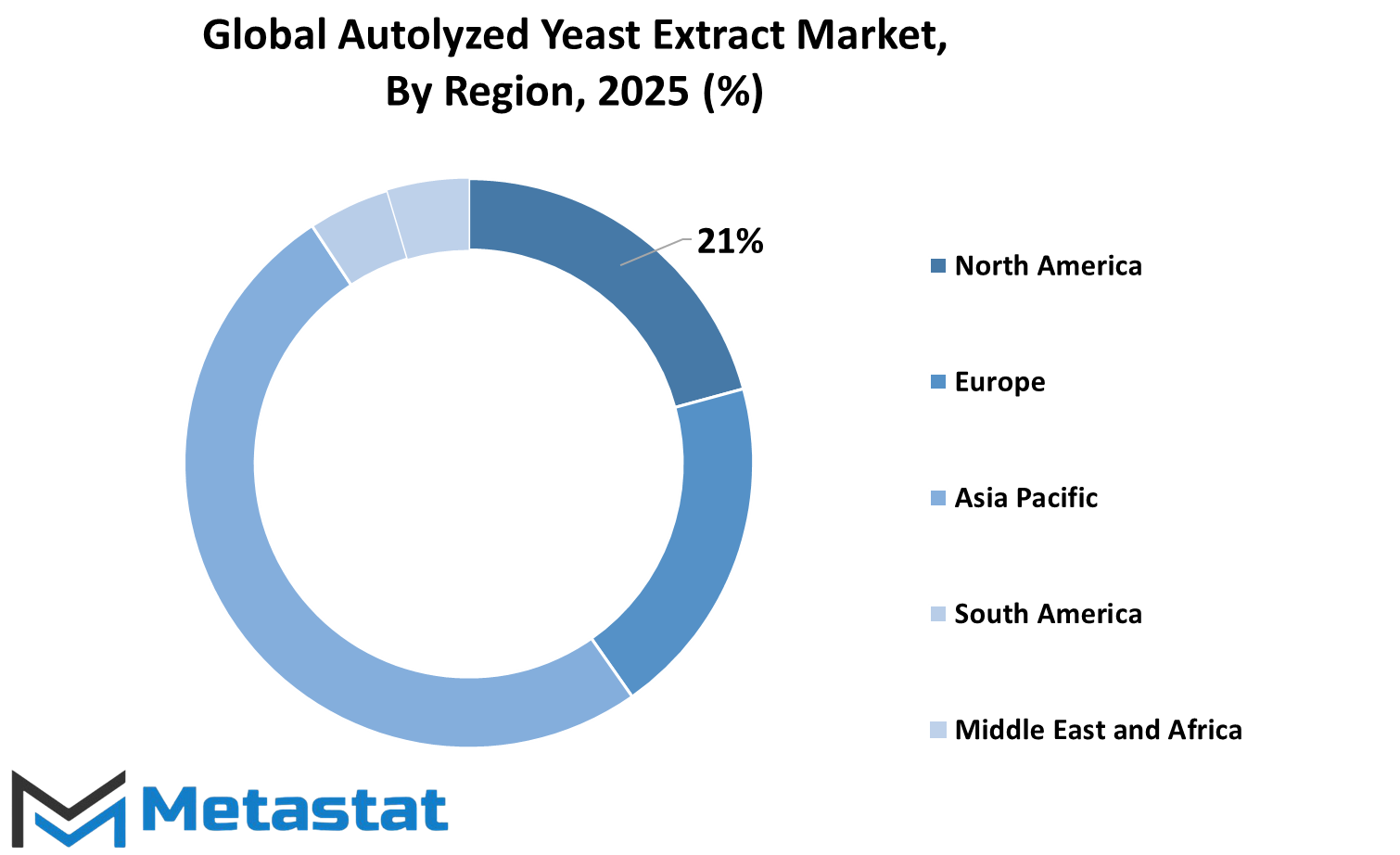
COMPETITIVE PLAYERS
The Global Autolyzed Yeast Extract market continues to pick up and gain momentum as sectors begin to recognize its functional features in multipurpose applications. This natural breakdown of yeast cells has been found useful in food, pharmaceuticals, animal feeds, and biotechnology at large. Enhancing flavor, giving more nutritional value, and supporting fermentation processes make it vital for various formulations. As consumers become further inclined toward natural and clean-label ingredients, so will the demand for autolyzed yeast extract.
The food industry is one of the major sectors encouraging demand for this ingredient. The main driving force, however, lies in the natural flavor-enhancing properties that reduce the requirement for artificial additives and the high sodium requirement in processed foods. Its umami taste boost the sensory profile of almost all soups, sauces, and even ingredients for snacks and ready-to-eat meals. Consumers conscious of their health and wellbeing have also been contributing to the rising use of this ingredient in plant-based and functional foods. Plus fortifying food products, the addition of essential amino acids or vitamins will make it a valuable component in nutritional formulations.
Autolyzed yeast extract plays a wonderful role in the preparation of culture media for enzyme production and probiotic formulations. But its most important contribution is in research concerning vaccines and the background pharmaceutical industry. Due to the advancements taking place in biotechnology applications, the future of this ingredient shall be bright concerning its use in producing bio-based solutions and sustainable substitutes.
This also serves as nutrition for humans and animals, improves gut health and digestion of livestock and poultry. A change in trend has certainly occurred in livestock feed due to the shift towards antibiotic-free animal nutrition. This will increase the demand for yeast-derived feed additives that improve immunity and overall performance in animals in the very near future. This necessitates further reinforcement as antibiotic regulations on animal production become tighter.
The other major players in the Autolyzed Yeast Extract industry include Thermo Fisher Scientific Inc., Leiber GmbH, Merck KGaA, Angel Yeast Co. Ltd, Zhuhai Huixuan Biotech Co. Ltd (HiYeast), H & A Health Products, Extracell, DSM N.V., Lallemand Inc., and Ohly GmbH. Most of the efforts of these companies have been concentrated on researching and innovating product development and strategic collaborations. Increasing demand automatically raises the bar for how the players in this industry are expected to invest in sustainable production and advancements in extraction technologies.
Autolyzed Yeast Extract Market Key Segments:
By Type
- Powder Autolyzed Yeast Extract
- Paste Autolyzed Yeast Extract
- Liquid Autolyzed Yeast Extract
By Application
- Food & Beverages
- Bakery & Confectionery
- Meat & Poultry
- Soups & Sauces
- Snacks
- Dairy Products
- Nutraceuticals
- Animal Feed
- Other
By Distribution Channel
- Supermarkets/Hypermarkets
- Specialty Stores
- Online Retail
Key Global Autolyzed Yeast Extract Industry Players
- Thermo Fisher Scientific Inc.
- LeiberGmbh
- Merck KGaA
- Angel Yeast Co., Ltd.
- Zhuhai Huixuan Biotech Co. Ltd (HiYeast)
- H & A Health Products
- Extracell
- DSM N.V.
- Lallemand Inc.
- Ohly GmbH
WHAT REPORT PROVIDES
- Full in-depth analysis of the parent Industry
- Important changes in market and its dynamics
- Segmentation details of the market
- Former, on-going, and projected market analysis in terms of volume and value
- Assessment of niche industry developments
- Market share analysis
- Key strategies of major players
- Emerging segments and regional growth potential




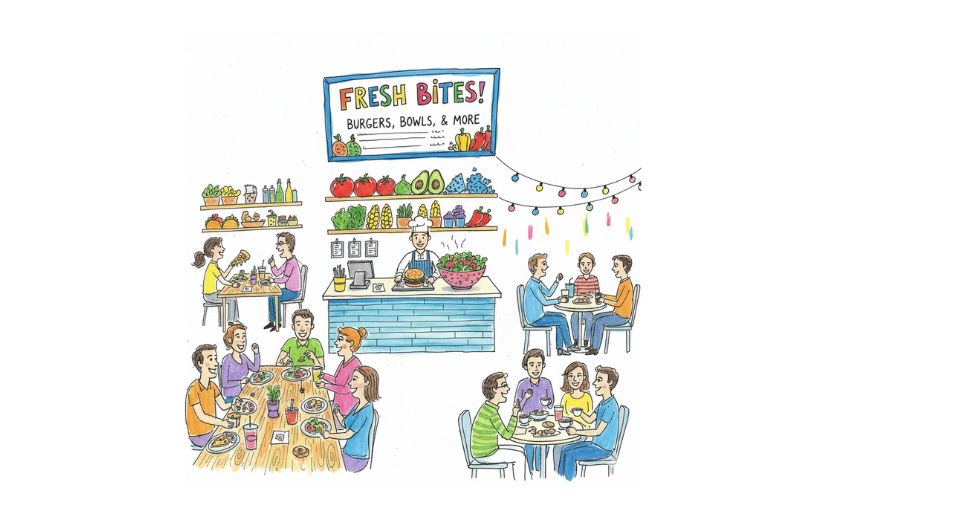
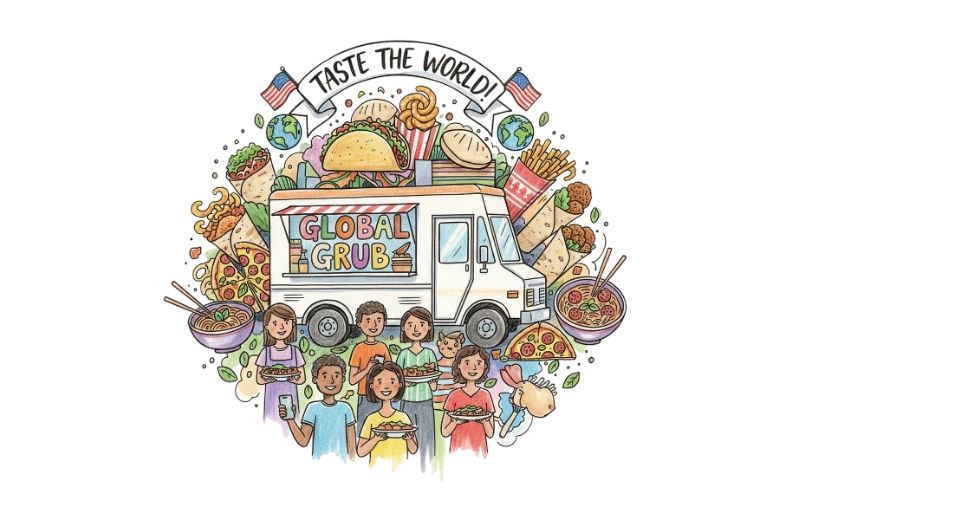
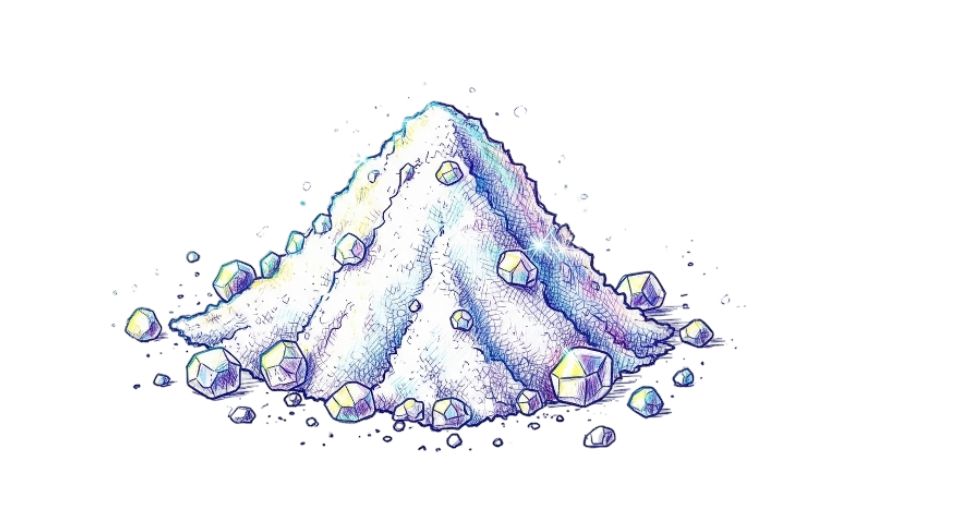

 US: +1 3023308252
US: +1 3023308252






